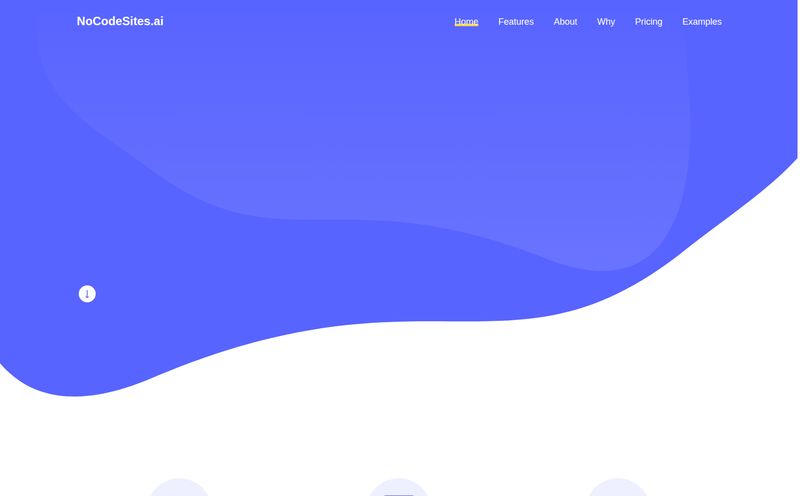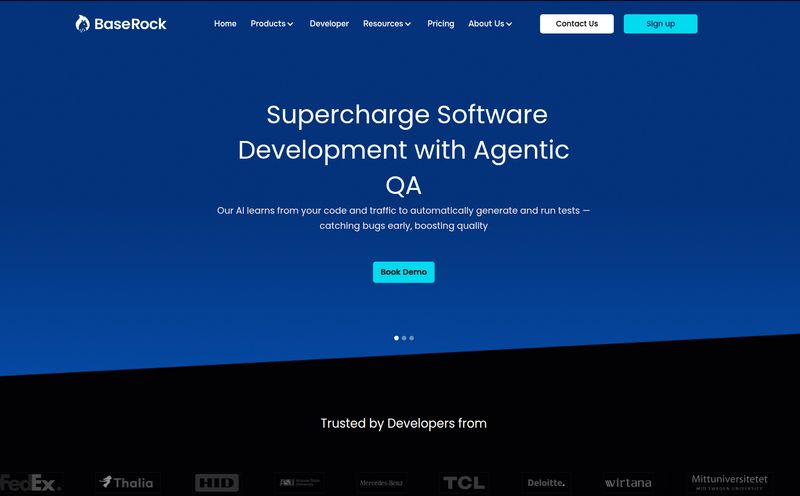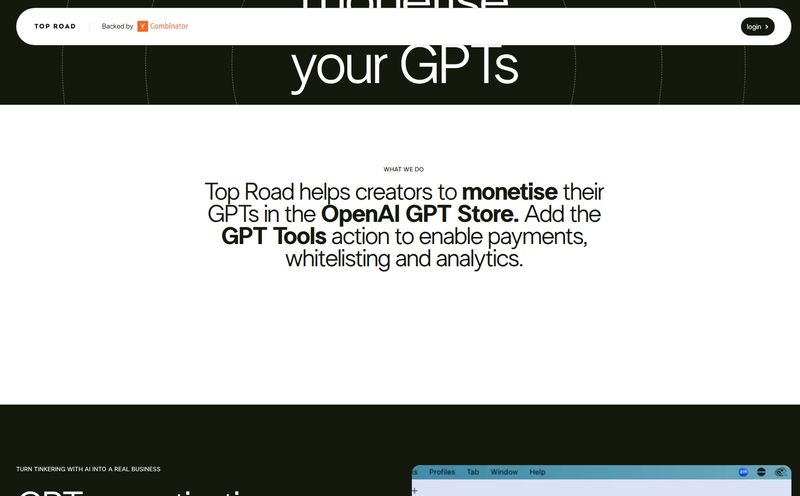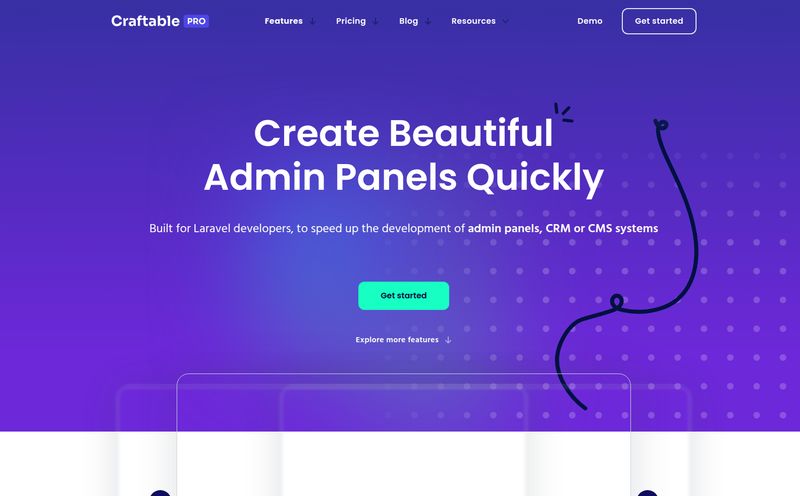How many hours of your life have you lost to creating flowcharts? I’m talking about the tedious, soul-crushing drag-and-drop dance. Nudging boxes. Aligning arrows. Realizing you missed a step and have to redo half the diagram. It feels like digital arts and crafts, but without any of the fun.
As an SEO and marketing strategist, I live and breathe processes. Customer journeys, content funnels, technical audit workflows… you name it, I’ve probably tried to chart it. For years, my go-to tools were the usual suspects—Lucidchart, Visio, Miro. They’re powerful, sure. But they can also feel like using a sledgehammer to crack a nut, especially when you just need a quick, clean diagram to get your point across.
So, when I stumbled upon a new breed of tool—an AI Flowchart Maker that promised to generate diagrams from simple text—my curiosity was piqued. Was this another overhyped AI gimmick, or could it genuinely change how we document ideas? I had to find out.

Visit AI Flowchart Maker
So, What Exactly Is This Thing?
At its core, an AI flowchart maker is exactly what it sounds like. You feed it a description of your process using natural language, and it spits out a professional-looking flowchart. No more drawing boxes. No more connecting lines manually. You just… type.
It's pretty slick, actually. Most of these tools, including the one I've been playing with, work by translating your plain English into a script-based diagramming language. For the tech-curious among us, it often uses something like Mermaid.js, a nifty bit of javascript that renders charts from text that looks a lot like Markdown. The AI acts as a translator, turning your conversational instructions into the precise code Mermaid needs to work its magic.
The idea is to take the grunt work out of process mapping, making it fast and accessible for developers, project managers, business analysts, and even us marketing folks who just want to visualize a campaign flow without pulling our hair out.
The Good, The Bad, and The AI
After spending a good chunk of time with this tool, I’ve got some thoughts. It’s not a magic wand that solves every problem, but it’s closer than I expected. Here's my breakdown.
Why I'm Genuinely Impressed
The biggest win here is speed. The sheer velocity at which you can go from a thought in your head to a shareable diagram is astounding. I once spent a whole afternoon mapping out a complex technical SEO migration plan. With this, I had a working first draft in about ten minutes. Ten. Minutes. That’s not an improvement; it's a complete change in the game.
It's also incredibly easy to use. If you can write an email, you can make a flowchart. The natural language processing is surprisingly good. You can write something like, "Start with User visits homepage. If they are a new user, send them to the signup page. If they are a returning user, show them their dashboard." The AI just gets it. This lowers the barrier to entry to almost zero.
And let's talk about collaboration. We've all been trapped in the email chain from hell with attachments named `Flowchart_v4_FINAL_final_USE_THIS_ONE.vsdx`. It’s a nightmare. With a tool like this, you’re editing the source text. It’s simple, clean, and version control becomes trivial. Many of them even have real-time collaboration built-in, which is perfect for remote teams trying to hash out a process together.
It's just a more fluid way of working.
Let's Be Real: The Not-So-Perfect Parts
Okay, it’s not all sunshine and automated diagrams. The biggest thing you need to understand is that the AI gets you 80-90% of the way there, but you're still the pilot. Sometimes, the initial output is a little… wonky. You might need to rephrase your text or go in and manually tweak the generated script to get the layout exactly right. It’s still faster than starting from scratch, but it’s not always a one-and-done affair.
This brings me to my next point: you're reliant on the AI's accuracy. If your instructions are ambiguous, the AI will take its best guess, and that guess might not be what you intended. Garbage in, garbage out, as they say. I found I had to be very clear and logical in my text descriptions to get the best results. You can't be too conversational or you'll confuse it.
Finally, there's a bit of a black-box element. The documentation on the specific limitations of the AI can be sparse. You sort of have to learn its quirks through trial and error, which can be a minor frustration when you're on a deadline.
Key Features That Actually Matter
Beyond the main gimmick, there are a few features that make these tools genuinely useful in a professional workflow.
- Customizable Designs: Thankfully, you aren't stuck with one generic look. Most tools allow you to change colors, shapes, and fonts to match your company's branding. This is critical if you're creating client-facing documents.
- Multiple Export Formats: This is non-negotiable for me. I need to be able to export my chart as a PNG for a PowerPoint slide, an SVG for a webpage (so it stays crisp), or a PDF for a formal report. This tool delivers on that front, offering teh flexibility you need for real-world applications.
- Real-Time Collaboration: I mentioned this before, but it's worth highlighting again. Seeing a teammate's changes to the text and the flowchart update instantly is a game-changer for brainstorming and refining processes as a group.
What's the Damage? A Look at the Pricing
Here’s the million-dollar question. As of my review, the pricing information for this specific platform is a bit of a mystery. The pricing page seems to be under wraps. This isn't uncommon for new tools that might still be in a beta phase or figuring out their market position.
My guess? We'll likely see a freemium model. A free tier with basic functionality and a limited number of charts, and then paid tiers for advanced features like premium support, more customization options, and unlimited diagrams. For now, it seems you can jump in and try it out without pulling out your credit card, which is always a plus in my book.
Who Should Actually Use This?
So, is an AI flowchart maker for you? In my opinion, it's a fantastic fit for a few key groups:
The Agile Developer or Project Manager: If you need to quickly map out application logic, user flows, or project sprints, this is your new best friend. It's fast enough to keep up with agile development and simple enough to use in a daily stand-up.
The SEO or Content Strategist: I've already used it to map out a pillar page and topic cluster strategy, a user flow for a new website section, and a process for our internal link building. It's brilliant for visualizing the kind of complex, interconnected systems we work with every day.
The Business Analyst: When you need to document an existing business process or design a new one, this tool lets you focus on the logic of the process itself, not on the mechanics of drawing it.
Honestly, anyone who has ever felt the pain of manual diagramming and values their time will see the appeal.
Frequently Asked Questions
How does an AI flowchart maker work?
It uses Natural Language Processing (NLP) to understand your text descriptions of a process. Then, it converts those instructions into a script (often using a language like Mermaid.js) that automatically generates the visual flowchart.
Is it better than traditional tools like Visio or Lucidchart?
It's different. For pure speed and ease of creating simple-to-moderately complex diagrams from text, it's much faster. However, traditional tools still offer more granular control over complex layouts and have a wider array of specialized diagram types.
Is this AI flowchart maker free to use?
Currently, specific pricing information isn't readily available, but many such tools operate on a freemium model. There's often a free tier for basic use, with paid plans for more advanced features and higher usage limits.
What formats can I export my flowchart to?
Most platforms allow for multiple export options, which are essential for professional use. Common formats include PNG, JPEG, SVG (for scalable web graphics), and PDF.
Can I collaborate with my team on a single flowchart?
Yes, many AI flowchart makers include real-time collaboration features. This allows multiple team members to edit the text description and see the flowchart update live, which is excellent for remote work and team brainstorming.
Is the AI-generated flowchart always perfect?
Not always. The AI provides a fantastic first draft, but it may require some minor tweaks. You might need to adjust your text or edit the underlying script to get the layout exactly how you want it. Think of it as an accelerator, not a fully autonomous solution.
My Final Verdict
I came in skeptical, but I'm walking away impressed. The AI Flowchart Maker isn't perfect, but it represents a fundamental shift in how we can create documentation. It trades pixel-perfect manual control for incredible speed and efficiency. For probably 80% of the diagrams I create, that's a trade I'm more than willing to make.
It’s a tool that respects your time. It lets you stay in the flow of your thoughts instead of getting bogged down in the mechanics of diagramming. While I'll keep my Lucidchart subscription for the really complex, heavy-duty jobs, for day-to-day process mapping, this AI-powered approach is my new default. It’s a definite keeper.
References and Sources
- AI Flowchart Maker Official Website
- Mermaid.js Documentation - For those interested in the scripting language behind the diagrams.



